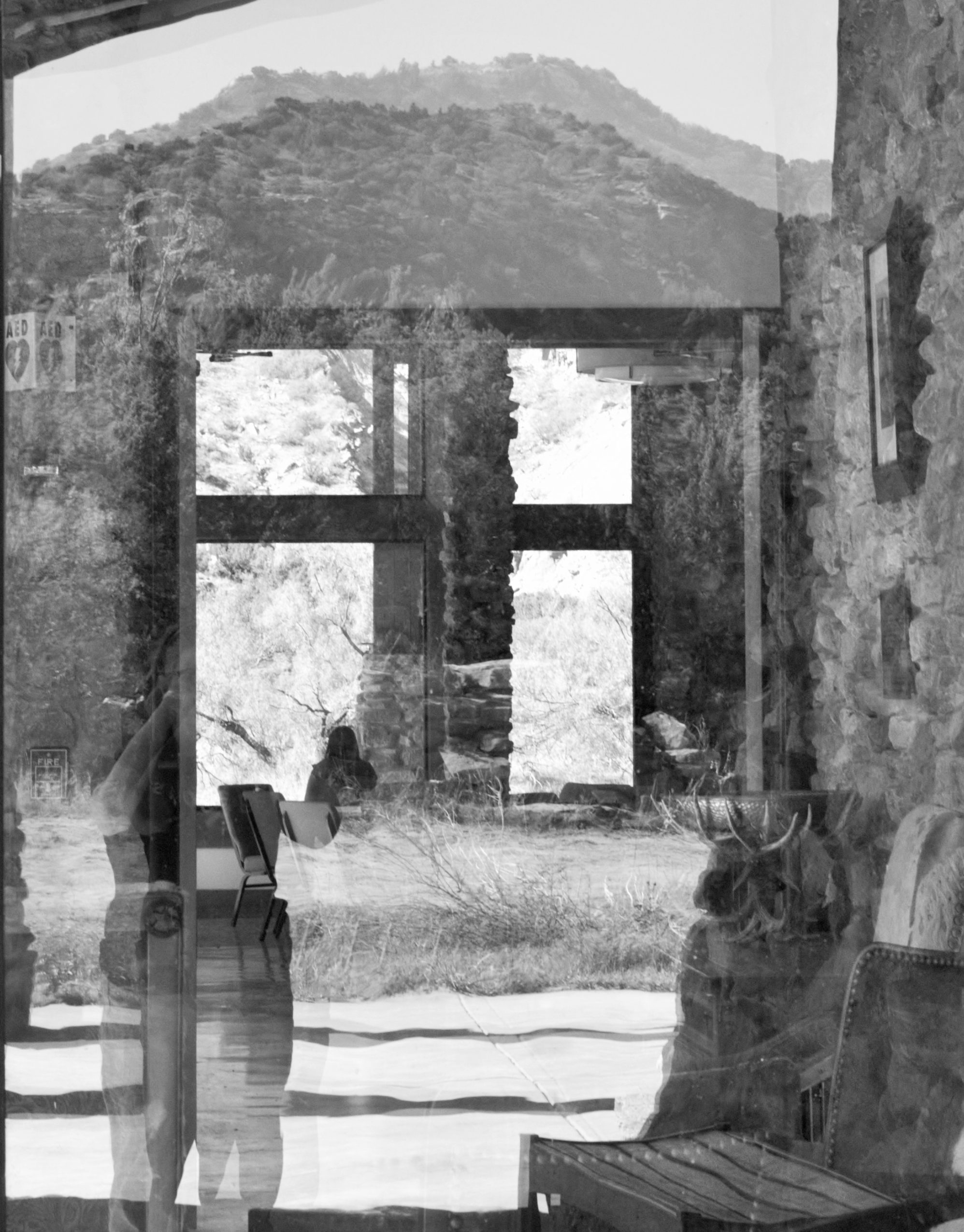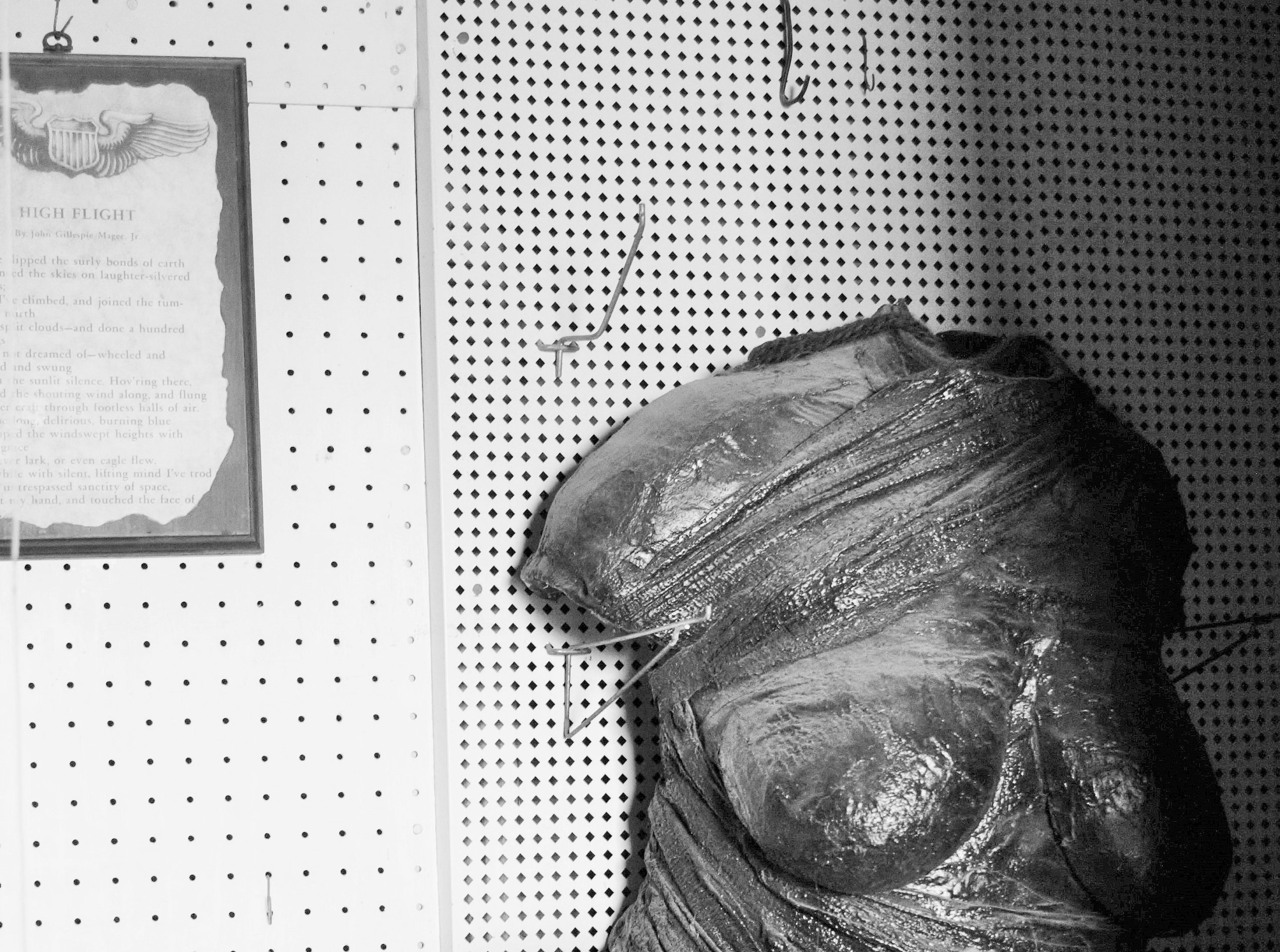
by debora Ewing
buy the book: Academia Nuts by William Bland
William Bland is a polymath.
Cribbing from the back of Academia Nuts: “in 1998 he began a series of 24 piano sonatas each in a different key, which was completed in 2014. In 2002, a visit from a former student, Alexander Seward, inspired him to begin writing a series of poems to accompany the writing of the sonatas. From 2002-2007 approximately five hundred eighty poems were written under the comprehensive title “Poems Accompanying Sonatas.” Several series of poems developed within the larger structure, including the series entitled “Academia Nuts”, written cautionarily for Alexander as he entered his university studies.”
I’m curious to see the entire collection of 580, but I feel Academia Nuts is perfectly curated. I sense a love of academia running like rails alongside a warning to Youth from a tired generation. Ardor is as much a character in the narrative as are clowns, connoisseurs, and head-jars. Words lead naturally into each other, creating melody. If you want, you can sink dreamily into the page, close your eyes, and feel the music. I’ve found myself immediately reading excerpts twice: once for rhythm and once for content.
The piece I chose to read for you, Academia Nuts–Series 2, No. 10, captures the sarcasm of an English Department’s cream-of-the-crop…oops, did I mean me?? I did mean me. We were terrible, with all the crushes on John and his turtleneck sweaters, sitting on desks, criticizing Rob’s spoken English while he talked to his current students (where are your prepositional phrases?); calling our professors by their first names. Making fun of the other students who were making fun of the professors, or us, or each other, or taking themselves way too seriously. Riffing on each other’s poems, not always complimentarily. I wonder how often Andrew caught a whiff of what he’d been given in this gift of poetry from William Bland.
I chose the piece I did because it was pretty straightforward in reading – I could make the jokes-in-type audible for you. The poet takes care to play games with punctuation and syllable. Visual elements make printed page indispensable. And his vocabulary is leaking into my fingers. You’re welcome.
…and this is a perfect segue into telling you what William Bland is doing these days. As C. Damon Carter, and with the same profound mind that wrote 580 poems, Bland has painted over 137 visual poems since December 2020. He has several themes: lovers, dragons, landscapes, religion, conversations.
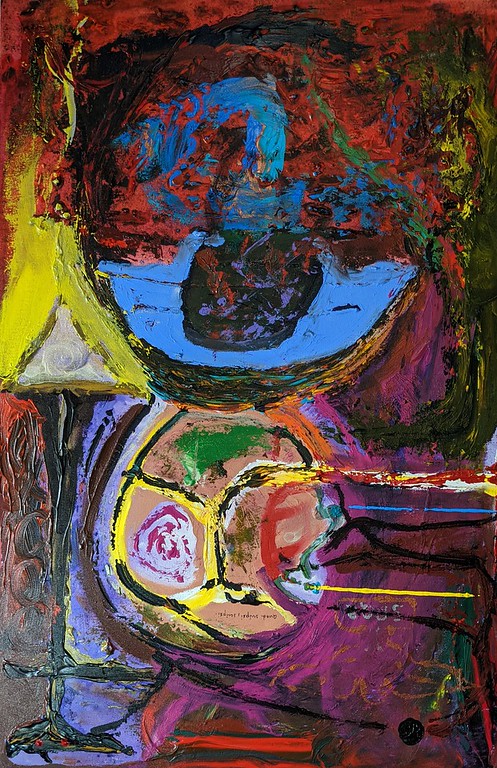
I especially like this because THERE ARE WORDS in there.
No. 17 “Portrait of Pontius Pilate, inverted” Acrylic on Canvas 36″ x 24″
Carter writes that “for years, I have admired the words of Pontius Pilate, especially his response to a request to change the inscription over the cross of Jesus: ‘What I have written, I have written.’ Carter’s powerful portrait includes the inscription of that statement in Latin.
Contact: Becky Starobin
becky@bridgerecords.com
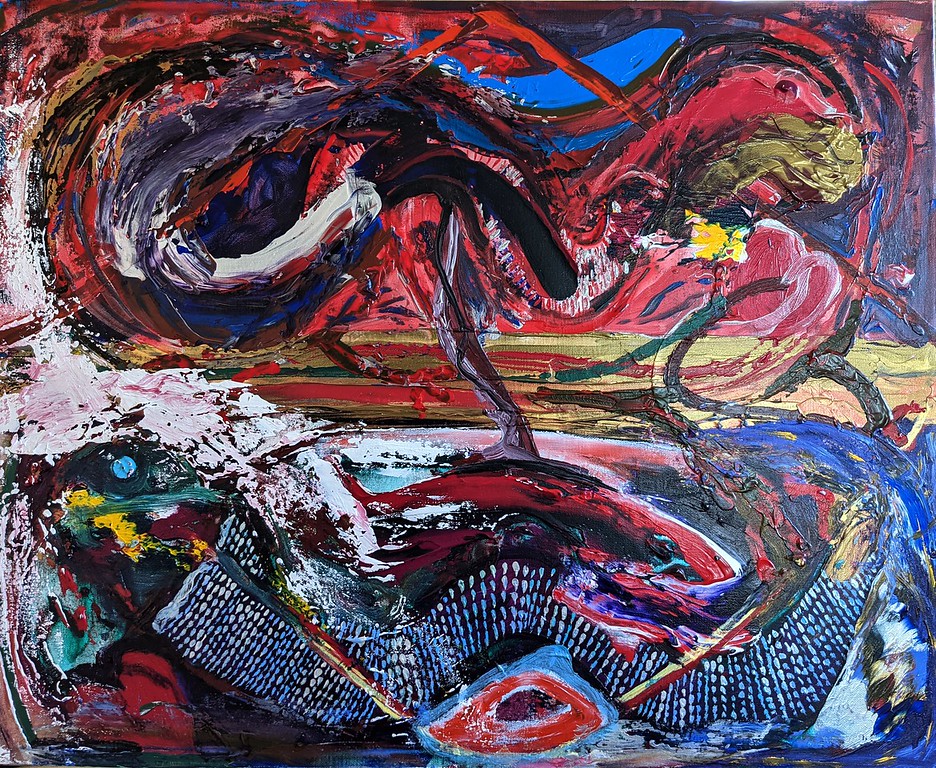
I love the viscerality, the rawness of passion, the mirroring – is it another entity, or a reflection of self?
No. 70 “My Dragon’s Lust” 24×30 Acrylic on Canvas
The second of the dragon trilogy is an erotic and complex painting with two dragons, two large anthropomorphic forms in the foreground, and numerous flowers, arches and curves.
Contact: Becky Starobin
becky@bridgerecords.com
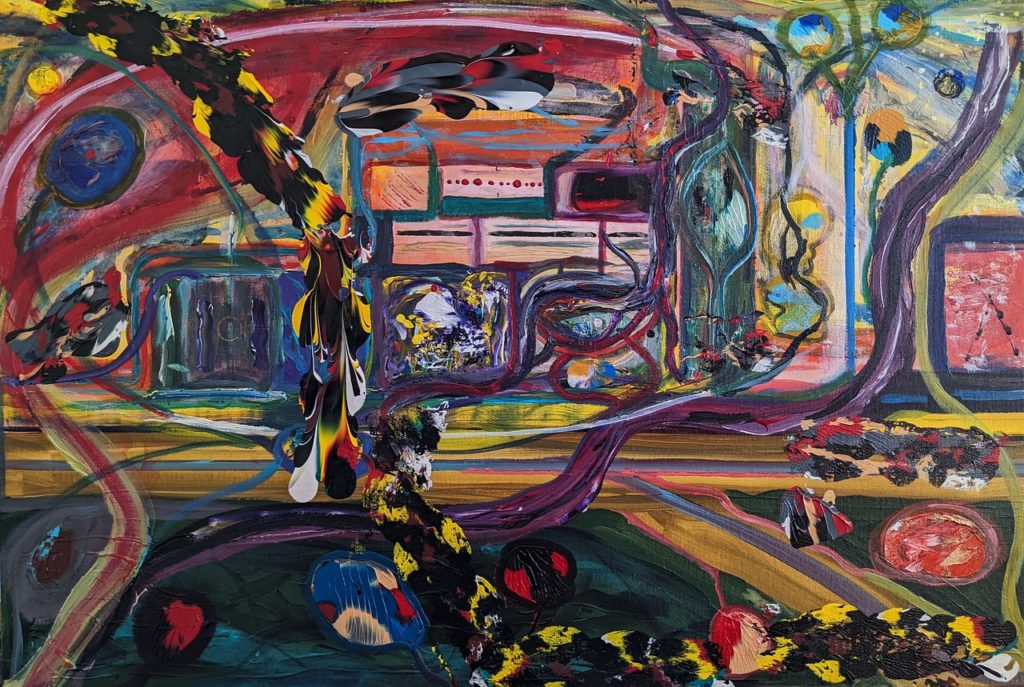
No. 137 Centre Street, near Eastern Blvd, Baltimore, 1971 “for an LSD instant, I felt I understood the structure of everything” 20×30
“This painting is an evocation of a scene set in Baltimore in 1971. One night, having taken LSD, I looked out from the balcony of my apartment, and for the briefest of instants felt as if I understood the structure, the dynamics, the geometrics of everything. The moment passed as quickly as I had felt it, but I never forgot the feeling.”
–C. Damon Carter, March 2022
In art, as in words, William Bland & his alter-ego/true self C. Damon Carter seem to draw the line which doesn’t quite separate the natural world from the surreal. Please go to the website and see the whole collection – it’s still growing.
You see the madness?
Then, get out of the reach
of dictators who have lured your
body
by appealing to your
mind.
Vibrations and hallucinations aside,…
– William Bland, academia nuts
be
free.
Further Reading:
buy the book: Academia Nuts by William Bland
William Bland recordings and sheet music are available at Bridge Records, here.
See all the paintings of C. Damon Carter Here. For more information, or to purchase, contact: Becky Starobin.
Bridge Records is an indefatigable resource for the deeper aspects of classical music. David Starobin directed the biopic String Trio, Los Angeles 1946, chronicling the birth of Schönberg’s String Trio, Op. 45.
Arnold Schönberg himself was a painter/composer. An interesting perspective on the parallels of his art and music is published here by College Music Symposium in 1995. A JStor .pdf is available.
Watch a lite version of the biography here: String Trio, Los Angeles 1946
Arnold Schönberg Center: From the Archive – Database Relaunch is a collection of correspondence to and from the composer, including plans for compositions, details peripheral to printing processes, non-musical activities, and family life.

